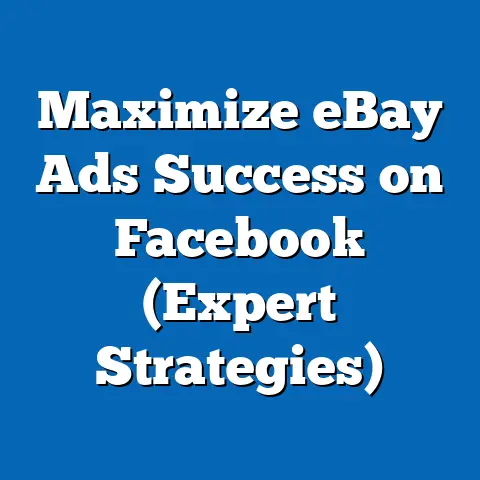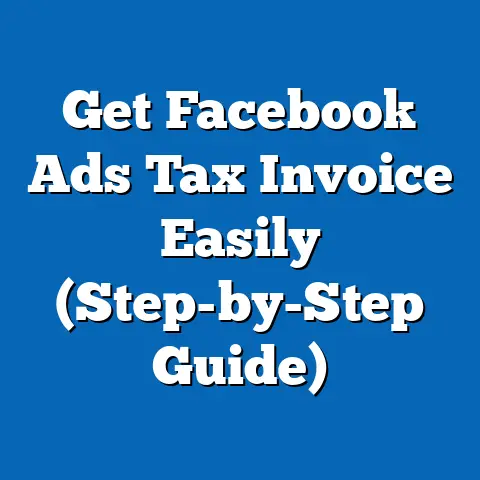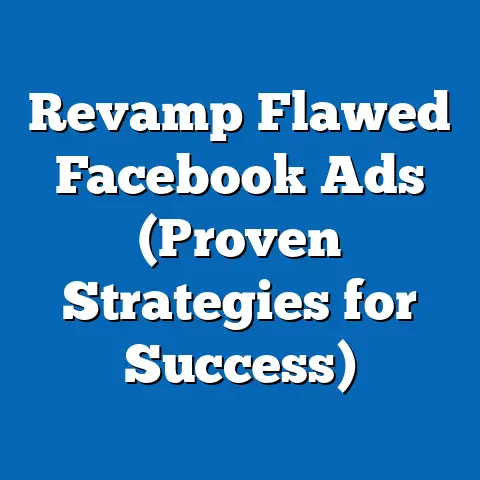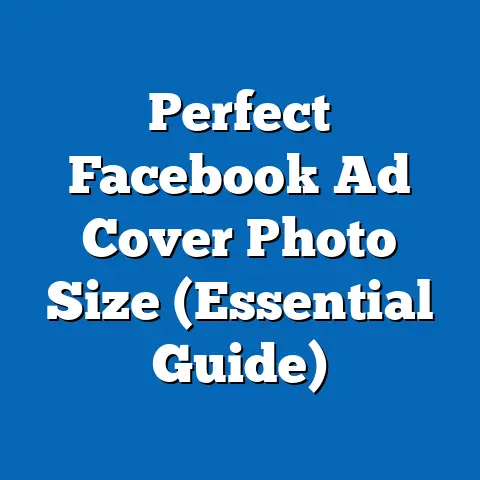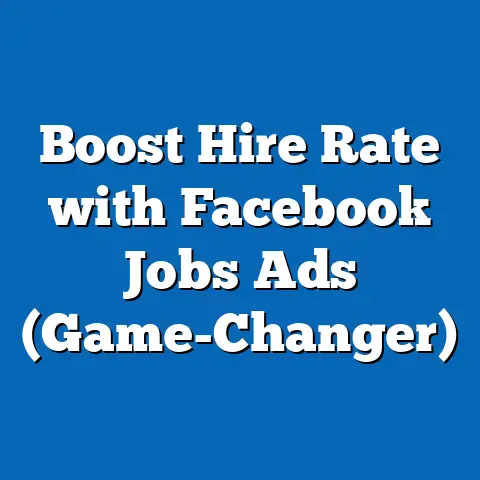Beto O’Rourke’s Winning Facebook Ads Strategy (Pro Insights)
How did a relatively unknown candidate from El Paso, Texas, nearly unseat a sitting U.S. Senator, igniting a national movement in the process? The answer, in large part, lies in a revolutionary approach to Facebook advertising that not only engaged voters but also set new benchmarks for political campaigns. Social media has fundamentally reshaped the political landscape, and within that landscape, Facebook stands as a colossus. It’s no longer enough to rely on traditional TV spots and town hall meetings; campaigns must connect with voters where they spend their time: online. And in 2018, Beto O’Rourke’s campaign understood this better than most, crafting a Facebook strategy that was as innovative as it was effective.
I remember when the 2018 election cycle began, the air was thick with anticipation and uncertainty. As a digital marketing strategist, I was particularly interested in how candidates would leverage social media to connect with voters. What I saw from the O’Rourke campaign was nothing short of a masterclass in digital engagement. His team didn’t just throw money at Facebook ads; they crafted a narrative, built a community, and used data to fine-tune their approach with laser precision. It was a campaign that understood the nuances of the platform and the desires of the electorate.
The Landscape of Political Advertising
Overview of Political Advertising Evolution
Political advertising has undergone a seismic shift in recent decades. For generations, campaigns relied on television, radio, and print media to reach voters. These channels, while effective in their time, were often expensive, lacked precise targeting capabilities, and offered limited opportunities for direct engagement with the electorate.
The internet changed everything. The rise of digital platforms, particularly social media, democratized access to voters, allowing campaigns to reach specific demographics with tailored messages at a fraction of the cost of traditional media. According to Statista, digital advertising spend in the United States for political campaigns has steadily increased, reaching billions of dollars in recent election cycles. A significant portion of this spending is now directed towards social media platforms like Facebook.
The shift to digital isn’t just about cost; it’s about effectiveness. Online ads can be targeted with incredible precision based on demographics, interests, behaviors, and even past voting history. This allows campaigns to deliver personalized messages to the voters most likely to be receptive, maximizing the impact of their advertising spend.
The Role of Facebook in Elections
Facebook has emerged as a dominant force in political advertising for several key reasons:
-
Massive User Base: With billions of active users worldwide, Facebook offers unparalleled reach to political campaigns.
-
Granular Targeting: Facebook’s advertising platform allows campaigns to target specific demographics, interests, and behaviors with remarkable precision. This enables highly personalized messaging, increasing the likelihood of engagement and conversion.
-
Cost-Effectiveness: Compared to traditional media, Facebook advertising offers a relatively low cost per impression, making it accessible to campaigns of all sizes.
-
Engagement Opportunities: Facebook provides opportunities for campaigns to engage directly with voters through comments, likes, shares, and live streams. This fosters a sense of community and allows campaigns to respond to concerns and build relationships with constituents.
-
Data and Analytics: Facebook provides detailed analytics that allow campaigns to track ad performance, measure engagement, and optimize their strategies in real-time.
Massive User Base: With billions of active users worldwide, Facebook offers unparalleled reach to political campaigns.
Granular Targeting: Facebook’s advertising platform allows campaigns to target specific demographics, interests, and behaviors with remarkable precision. This enables highly personalized messaging, increasing the likelihood of engagement and conversion.
Cost-Effectiveness: Compared to traditional media, Facebook advertising offers a relatively low cost per impression, making it accessible to campaigns of all sizes.
Engagement Opportunities: Facebook provides opportunities for campaigns to engage directly with voters through comments, likes, shares, and live streams. This fosters a sense of community and allows campaigns to respond to concerns and build relationships with constituents.
Data and Analytics: Facebook provides detailed analytics that allow campaigns to track ad performance, measure engagement, and optimize their strategies in real-time.
I’ve seen firsthand how Facebook’s targeting capabilities can transform a campaign. In one local election, I helped a candidate target voters who had expressed interest in environmental issues with ads highlighting the candidate’s commitment to sustainability. The results were remarkable, leading to a significant increase in voter engagement and ultimately contributing to the candidate’s victory.
Case Studies of Previous Campaigns
While Beto O’Rourke’s campaign is a standout example, it’s important to acknowledge that other candidates have successfully utilized Facebook ads in the past. Barack Obama’s 2008 and 2012 campaigns were pioneers in digital marketing, leveraging social media to mobilize volunteers, raise funds, and connect with voters on a personal level. Donald Trump’s 2016 campaign also demonstrated the power of Facebook advertising, using targeted messaging to appeal to specific demographics and drive voter turnout.
However, what set O’Rourke’s campaign apart was its focus on authenticity, community engagement, and data-driven decision-making. While other campaigns may have relied on negative messaging or divisive tactics, O’Rourke’s campaign focused on building bridges, fostering dialogue, and inspiring hope. This approach, combined with a sophisticated understanding of Facebook’s advertising platform, proved to be a winning formula.
Key Takeaway: Political advertising has evolved from traditional media to digital platforms, with Facebook playing a crucial role in modern elections due to its reach, targeting capabilities, cost-effectiveness, engagement opportunities, and data analytics.
Beto O’Rourke’s Campaign Overview
Background of Beto O’Rourke
Beto O’Rourke, born Robert Francis O’Rourke in El Paso, Texas, is an American politician who served as the U.S. Representative for Texas’s 16th congressional district from 2013 to 2019. Before entering politics, O’Rourke co-founded Stanton Street Technology, an internet services and software company, and served on the El Paso City Council from 2005 to 2012.
O’Rourke’s political career is marked by his progressive views and his ability to connect with voters on a personal level. He is known for his support of policies such as universal healthcare, comprehensive immigration reform, and addressing climate change.
2018 Senate Race in Texas
In 2018, O’Rourke launched a campaign to unseat incumbent Republican Senator Ted Cruz. The race quickly became one of the most closely watched and expensive Senate contests in the country. O’Rourke’s campaign gained national attention for its grassroots organizing, fundraising prowess, and innovative use of social media.
The Texas Senate race was significant for several reasons. It was a high-stakes contest in a traditionally conservative state, offering a test of whether a progressive candidate could appeal to a broad range of voters. The race also took place during a period of heightened political polarization, making it all the more challenging for candidates to bridge divides and build consensus.
Initial Challenges
O’Rourke faced several challenges at the outset of his campaign. He was a relatively unknown candidate with limited name recognition outside of his congressional district. He was also running against a well-funded incumbent with a strong base of support among Republican voters.
Furthermore, O’Rourke’s progressive views were seen as a liability in a state that has historically leaned conservative. He needed to find a way to appeal to moderate voters and independents without alienating his base of support.
To overcome these challenges, O’Rourke’s campaign recognized the importance of building a strong online presence and leveraging social media to connect with voters. They understood that Facebook offered a unique opportunity to reach specific demographics with tailored messages, engage directly with constituents, and build a sense of community around the campaign.
I remember thinking at the time that O’Rourke had an uphill battle. Cruz was a formidable opponent, and Texas was not known for electing Democrats to statewide office. But O’Rourke’s energy and charisma were undeniable, and his campaign’s focus on grassroots organizing and digital engagement gave him a fighting chance.
Key Takeaway: Beto O’Rourke’s 2018 Senate campaign in Texas was a high-stakes contest against an incumbent Republican, requiring innovative strategies to overcome challenges such as limited name recognition and the state’s conservative leanings.
Crafting the Winning Facebook Ads Strategy
Target Audience Identification
One of the keys to O’Rourke’s success on Facebook was his campaign’s ability to identify and segment their target audience with remarkable precision. They didn’t just blanket Facebook with ads; they carefully crafted messages tailored to specific demographics, interests, and behaviors.
The campaign likely utilized a multi-faceted approach to target audience identification:
-
Demographic Targeting: They likely targeted voters based on age, gender, location, education level, and other demographic factors.
-
Interest-Based Targeting: They targeted voters who had expressed interest in topics relevant to O’Rourke’s platform, such as healthcare, education, environmental issues, and immigration reform.
-
Behavioral Targeting: They targeted voters based on their online behavior, such as their engagement with political content, their support for specific causes, and their past voting history.
-
Lookalike Audiences: They created lookalike audiences based on their existing supporters, targeting voters who shared similar characteristics and interests.
Demographic Targeting: They likely targeted voters based on age, gender, location, education level, and other demographic factors.
Interest-Based Targeting: They targeted voters who had expressed interest in topics relevant to O’Rourke’s platform, such as healthcare, education, environmental issues, and immigration reform.
Behavioral Targeting: They targeted voters based on their online behavior, such as their engagement with political content, their support for specific causes, and their past voting history.
Lookalike Audiences: They created lookalike audiences based on their existing supporters, targeting voters who shared similar characteristics and interests.
For example, the campaign might have targeted young voters with ads highlighting O’Rourke’s commitment to addressing climate change, while targeting older voters with ads emphasizing his support for Social Security and Medicare. They might have targeted suburban women with ads focusing on issues such as affordable healthcare and education.
This level of precision allowed the campaign to deliver highly relevant messages to the voters most likely to be receptive, maximizing the impact of their advertising spend.
Content Creation and Messaging
O’Rourke’s campaign also excelled at creating compelling and authentic content that resonated with voters. Their ads weren’t just generic political messages; they were stories that connected with people on a personal level.
The campaign utilized a variety of ad formats, including:
-
Image Ads: These ads featured visually appealing images of O’Rourke interacting with voters, attending rallies, and speaking at events.
-
Video Ads: Video ads were a key component of the campaign’s strategy. They featured O’Rourke speaking directly to voters, sharing his vision for Texas, and addressing their concerns.
-
Carousel Ads: Carousel ads allowed the campaign to showcase multiple images or videos in a single ad unit, telling a more complete story.
-
Lead Generation Ads: These ads allowed the campaign to collect email addresses and other contact information from interested voters, building their email list for future communication.
Image Ads: These ads featured visually appealing images of O’Rourke interacting with voters, attending rallies, and speaking at events.
Video Ads: Video ads were a key component of the campaign’s strategy. They featured O’Rourke speaking directly to voters, sharing his vision for Texas, and addressing their concerns.
Carousel Ads: Carousel ads allowed the campaign to showcase multiple images or videos in a single ad unit, telling a more complete story.
Lead Generation Ads: These ads allowed the campaign to collect email addresses and other contact information from interested voters, building their email list for future communication.
The messaging in O’Rourke’s ads was consistently positive, hopeful, and inclusive. He focused on building bridges, fostering dialogue, and inspiring voters to come together to solve the challenges facing Texas. He avoided negative attacks and divisive rhetoric, instead choosing to focus on his vision for the future.
Utilizing Video and Live Streaming
Video and live streaming were particularly effective tools for O’Rourke’s campaign. Video ads allowed him to connect with voters on a personal level, sharing his thoughts and ideas in a more engaging and authentic way than traditional text-based ads.
O’Rourke also embraced live streaming on Facebook, broadcasting town hall meetings, rallies, and other events. This allowed voters to see him in action, ask questions, and engage directly with the campaign.
I remember watching one of O’Rourke’s live streams and being struck by his ability to connect with the audience. He was articulate, passionate, and genuinely interested in hearing what people had to say. It was clear that he wasn’t just reading from a script; he was speaking from the heart.
Engaging with the Community
O’Rourke’s campaign also understood the importance of engaging directly with the community on Facebook. They didn’t just broadcast messages; they actively responded to comments, answered questions, and fostered a sense of dialogue and collaboration.
The campaign likely had a team of social media managers dedicated to monitoring Facebook comments and responding to inquiries. They also encouraged supporters to share their own stories and experiences, creating a sense of collective ownership and participation.
This level of engagement helped to build trust and credibility with voters, making them more likely to support O’Rourke’s campaign.
Key Takeaway: Beto O’Rourke’s winning Facebook ads strategy involved precise target audience identification, compelling content creation, strategic use of video and live streaming, and active engagement with the community.
Data-Driven Decisions and Analytics
Harnessing Facebook Insights
O’Rourke’s campaign didn’t just rely on intuition; they made data-driven decisions based on the insights provided by Facebook’s analytics tools. Facebook Insights allowed the campaign to track a wide range of metrics, including:
-
Reach: The number of unique users who saw their ads.
-
Impressions: The number of times their ads were displayed.
-
Engagement: The number of likes, comments, shares, and clicks their ads received.
-
Website Traffic: The amount of traffic their ads drove to their campaign website.
-
Conversions: The number of voters who signed up for their email list, donated to their campaign, or volunteered their time.
Reach: The number of unique users who saw their ads.
Impressions: The number of times their ads were displayed.
Engagement: The number of likes, comments, shares, and clicks their ads received.
Website Traffic: The amount of traffic their ads drove to their campaign website.
Conversions: The number of voters who signed up for their email list, donated to their campaign, or volunteered their time.
By tracking these metrics, the campaign could gain a clear understanding of which ads were performing well and which ones were not. They could then use this information to optimize their strategy, improving their results and maximizing their ROI.
A/B Testing for Optimization
A/B testing was a crucial component of O’Rourke’s data-driven approach. The campaign likely conducted numerous A/B tests to compare different versions of their ads, including:
-
Headline Variations: Testing different headlines to see which ones generated the most clicks.
-
Image Variations: Testing different images to see which ones were most visually appealing and engaging.
-
Call-to-Action Variations: Testing different calls to action to see which ones prompted the most conversions.
-
Targeting Variations: Testing different targeting parameters to see which audiences were most receptive to their message.
Headline Variations: Testing different headlines to see which ones generated the most clicks.
Image Variations: Testing different images to see which ones were most visually appealing and engaging.
Call-to-Action Variations: Testing different calls to action to see which ones prompted the most conversions.
Targeting Variations: Testing different targeting parameters to see which audiences were most receptive to their message.
By systematically testing different variations, the campaign could identify the most effective elements and incorporate them into their ads, continuously improving their performance.
I’ve seen A/B testing work wonders for my clients. One time, I helped a business test two different calls to action on their Facebook ads. One call to action was “Learn More,” while the other was “Get Started Today.” To our surprise, the “Get Started Today” call to action generated significantly more leads, even though it seemed more aggressive. This simple test helped the business dramatically improve their lead generation efforts.
Adjusting Strategies Based on Data
The most important aspect of O’Rourke’s data-driven approach was his campaign’s willingness to adjust their strategies based on the data they were collecting. They didn’t just set their ads and forget about them; they constantly monitored their performance and made changes as needed.
For example, if they noticed that a particular ad was generating a high number of impressions but a low number of clicks, they might experiment with a different headline or image to improve its click-through rate. If they noticed that a particular audience was not responding to their message, they might adjust their targeting parameters to reach a different group of voters.
This iterative approach allowed the campaign to continuously refine their strategy, ensuring that they were always delivering the most effective message to the right audience at the right time.
Key Takeaway: Data-driven decisions and analytics, including harnessing Facebook Insights, A/B testing for optimization, and adjusting strategies based on data, were essential components of Beto O’Rourke’s successful Facebook ads campaign.
The Outcome and Impact of O’Rourke’s Strategy
Election Results
Despite a well-funded and innovative campaign, Beto O’Rourke ultimately lost the 2018 Senate race to incumbent Ted Cruz. However, the results were much closer than many had predicted. O’Rourke received 48.3% of the vote, while Cruz received 50.9%.
While O’Rourke’s loss was undoubtedly disappointing for his supporters, his performance was remarkable considering the political landscape of Texas and the challenges he faced. He came closer to unseating Cruz than any Democrat in decades, and his campaign energized voters and inspired a new generation of political activists.
Long-Term Effects on Political Campaigning
O’Rourke’s Facebook ads strategy had a significant impact on future political campaigns. It demonstrated the power of social media to mobilize voters, raise funds, and connect with constituents on a personal level.
Many campaigns have since adopted O’Rourke’s strategies, focusing on authentic content, community engagement, and data-driven decision-making. The use of video and live streaming has become increasingly prevalent, as candidates seek to connect with voters in a more engaging and personal way.
O’Rourke’s campaign also highlighted the importance of grassroots organizing and fundraising. His campaign relied heavily on small-dollar donations from individual supporters, demonstrating that it is possible to compete with well-funded incumbents without relying on corporate or PAC money.
Lessons Learned
There are several key lessons that can be learned from O’Rourke’s Facebook ads strategy:
-
Authenticity Matters: Voters are increasingly skeptical of traditional political messaging. They want to see authentic candidates who are genuinely interested in their concerns.
-
Community Engagement is Essential: Campaigns must engage directly with voters, responding to comments, answering questions, and fostering a sense of dialogue and collaboration.
-
Data-Driven Decisions are Key: Campaigns must track their ad performance, conduct A/B tests, and adjust their strategies based on the data they are collecting.
-
Video and Live Streaming are Powerful Tools: Video ads and live streams can help candidates connect with voters on a personal level, sharing their thoughts and ideas in a more engaging and authentic way.
-
Grassroots Organizing and Fundraising Can Make a Difference: Campaigns can compete with well-funded incumbents by relying on small-dollar donations from individual supporters and building a strong grassroots network.
Authenticity Matters: Voters are increasingly skeptical of traditional political messaging. They want to see authentic candidates who are genuinely interested in their concerns.
Community Engagement is Essential: Campaigns must engage directly with voters, responding to comments, answering questions, and fostering a sense of dialogue and collaboration.
Data-Driven Decisions are Key: Campaigns must track their ad performance, conduct A/B tests, and adjust their strategies based on the data they are collecting.
Video and Live Streaming are Powerful Tools: Video ads and live streams can help candidates connect with voters on a personal level, sharing their thoughts and ideas in a more engaging and authentic way.
Grassroots Organizing and Fundraising Can Make a Difference: Campaigns can compete with well-funded incumbents by relying on small-dollar donations from individual supporters and building a strong grassroots network.
Key Takeaway: While Beto O’Rourke lost the 2018 Senate race, his Facebook ads strategy had a lasting impact on political campaigning, emphasizing authenticity, community engagement, data-driven decisions, and the power of video and grassroots organizing.
Conclusion
Beto O’Rourke’s Facebook ads strategy was a game-changer. He didn’t just run a campaign; he built a movement. He showed the power of authentic connection, data-driven decision-making, and community engagement in the digital age. While he ultimately didn’t win the Senate seat, his campaign left an undeniable mark on the landscape of political advertising.
The lessons learned from O’Rourke’s campaign are applicable not just to politics, but to any organization seeking to connect with its audience in a meaningful way. Whether you’re running for office, promoting a product, or building a brand, the principles of authenticity, engagement, and data-driven decision-making are essential for success.
As we move further into the digital era, the importance of social media in political campaigns will only continue to grow. The challenge for future candidates will be to build on the lessons learned from O’Rourke’s campaign, finding new and innovative ways to connect with voters, build community, and inspire hope. The future of political campaigns in the digital era is bright, and the potential of Facebook as a platform for grassroots movements is immense.
The 2018 election cycle taught me a lot about the power of digital marketing, and O’Rourke’s campaign was a prime example. It showed me that it’s not just about the money you spend; it’s about the message you deliver and the connection you make. It was a reminder that even in a world of algorithms and data, the human element still matters most.
Call to Action: Consider how you might apply these insights to your own campaigns, whether in politics or business. Follow Beto O’Rourke’s ongoing journey in the public eye and continue to learn from his innovative approach to communication and engagement. The future of political advertising is here, and it’s up to us to shape it in a positive and impactful way.

